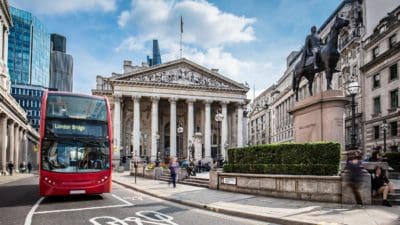Suppose you had a choice between receiving £10,000 in cash right here right now or a £100 monthly passive income for the foreseeable future. What’s the right thing to choose?
The boring answer is that it depends. But to see more precisely why this is the case – and what it depends on – let’s have a look at the returns that could be generated by investing each.
Compound interest
Let’s suppose I’m able to invest at a 6% annual return for the foreseeable future. With £10,000, it would earn £600 in passive income in the first year – or £50 a month.
Should you invest £1,000 in Barratt Developments right now?
When investing expert Mark Rogers has a stock tip, it can pay to listen. After all, the flagship Motley Fool Share Advisor newsletter he has run for nearly a decade has provided thousands of paying members with top stock recommendations from the UK and US markets. And right now, Mark thinks there are 6 standout stocks that investors should consider buying. Want to see if Barratt Developments made the list?
If I kept reinvesting my returns, the power of compound interest means I’d earn £1,056 in year 10, £1,923 in year 20, and £3,498 in year 30. And I’d have an investment worth £60,225.
By contrast, if I took the monthly income and invested it at the same rate, I’d only receive £39 in the first year. But, over time, adding £100 each month while reinvesting the returns works out well.
I’d still be worse off after 10 years than if I’d taken £10,000, earning £924 a year. But I’d receive £2,665 after 20 years and £5,832 in year 30, with an investment eventually worth £101,053.
The tipping point is in year 12. That’s when the monthly £100 portfolio (which returns £1,1941) moves ahead of the £10,000 portfolio (which returns £1,191).
A higher rate of return moves the tipping point further into the future. But the general point is clear. Over time, a £100 monthly investment can be extremely valuable.
How to get a 6% return
When a stock has a 6% dividend yield, it’s often a sign investors are worried about the company’s prospects. But in the case of Primary Health Properties (LSE:PHP), I think they’re mistaken.
Please note that tax treatment depends on the individual circumstances of each client and may be subject to change in future. The content in this article is provided for information purposes only. It is not intended to be, neither does it constitute, any form of tax advice.
The risk I think investors are seeing is the firm’s debt. It has a loan-to-value ratio of 48%, which is much higher than other real estate investment trusts (REITs) and is a potential threat to the long-term stability of the business.
This is something investors ought to pay attention to, since excess debt can cause costs to rise and dividends to fall. But I think it’s less of a problem than it might seem at first sight.
As a rule of thumb, the more predictable a firm’s income is, the more it can afford to take on in debt. And the rental income Primary Health Properties generates is more secure than other REITs.
Most of the company’s rent comes from the NHS, making the chances of a rent default relatively low. This gives it very good visibility and allows the business to plan for its debt obligations.
Furthermore, an aging population means demand for GP appointments is unlikely to fall any time soon. As a result, I think this could be a source of 6% dividends for some time to come.
Long-term investing
If someone offered me £10,000 today, I’d be delighted to take it. But as someone with a long-term investment outlook, a £100 monthly passive income would be even better.
The most important thing though, is to keep looking for the best stocks to buy. Whether it’s £10,000 today or £100 a month for the long run, finding the right opportunities is key.







